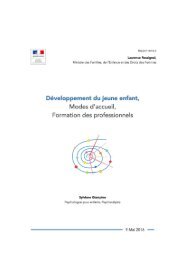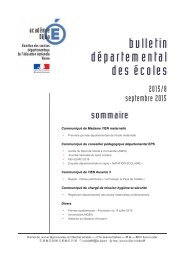agrl_innovations_in_ssa.pdf?utm_content=buffercb41d&utm_medium=social&utm_source=twitter
agrl_innovations_in_ssa.pdf?utm_content=buffercb41d&utm_medium=social&utm_source=twitter
agrl_innovations_in_ssa.pdf?utm_content=buffercb41d&utm_medium=social&utm_source=twitter
Create successful ePaper yourself
Turn your PDF publications into a flip-book with our unique Google optimized e-Paper software.
Integrated agricultural research<br />
for development<br />
FARA has promoted the use of <strong><strong>in</strong>novations</strong> systems approaches encourag<strong>in</strong>g processes that<br />
have become known as Integrated Agricultural Research for Development or IAR4D. This has<br />
four def<strong>in</strong><strong>in</strong>g pr<strong>in</strong>ciples (Hawk<strong>in</strong>s et al., 2009), which <strong>in</strong>tegrate:<br />
• Perspectives, knowledge and actions of different stakeholders around a common theme.<br />
• Learn<strong>in</strong>g that stakeholders achieve through work<strong>in</strong>g together.<br />
• Analysis, action and change across environmental, social and economic dimensions of<br />
development<br />
• Analysis, action and change at different levels of spatial, economic and social organisation.<br />
To put these pr<strong>in</strong>ciples <strong>in</strong>to effect requires jo<strong>in</strong>t knowledge shar<strong>in</strong>g, jo<strong>in</strong>t analysis and jo<strong>in</strong>t<br />
action and change, which necessitate <strong>in</strong>dividual, organisational and <strong>in</strong>stitutional capacities<br />
that ensure these activities take place. This requires different stakeholders, <strong>in</strong>dividuals and<br />
organisations from both public and private sectors to come together on a level play<strong>in</strong>g field.<br />
IAR4D can be viewed as a set of good practices that adds value to exist<strong>in</strong>g research and<br />
development processes and therefore should be viewed as an approach or a framework<br />
foster<strong>in</strong>g the quality of the processes. IAR4D is therefore concerned not only with technology<br />
or policy outputs but also with markets, <strong>in</strong>stitutional and <strong>in</strong>frastructural outputs and improved<br />
capacity and behavioural processes that will ensure that new knowledge is put <strong>in</strong>to use. This<br />
requires the creation of favourable organisational and <strong>in</strong>stitutional environments that may<br />
require changes <strong>in</strong> governance structures, leadership and management, resources procedure<br />
and culture to ensure that IAR4D becomes part of ma<strong>in</strong>stream research and development<br />
practice.<br />
Interventions to support the <strong>in</strong>novation process vary with purpose and are <strong>in</strong>fluenced by both<br />
the context and the capacity of different stakeholders.<br />
Figure 2 demonstrates a typical three-phased process from <strong>in</strong>itial engagement with stakeholders,<br />
through plann<strong>in</strong>g, implement<strong>in</strong>g, learn<strong>in</strong>g and assess<strong>in</strong>g to a f<strong>in</strong>al phase of ensur<strong>in</strong>g<br />
a cont<strong>in</strong>u<strong>in</strong>g and susta<strong>in</strong>able and dynamic <strong>in</strong>novation system. These three phases compare<br />
with those identified <strong>in</strong> Table 2 <strong>in</strong> both planned and opportunity-driven <strong><strong>in</strong>novations</strong>: Phase 1<br />
<strong>in</strong>clud<strong>in</strong>g the foundation or <strong>in</strong>itiat<strong>in</strong>g stages, Phase 2 the expansion or emergence stages and<br />
Phase 3 the susta<strong>in</strong>able <strong>in</strong>novation stage.<br />
15






